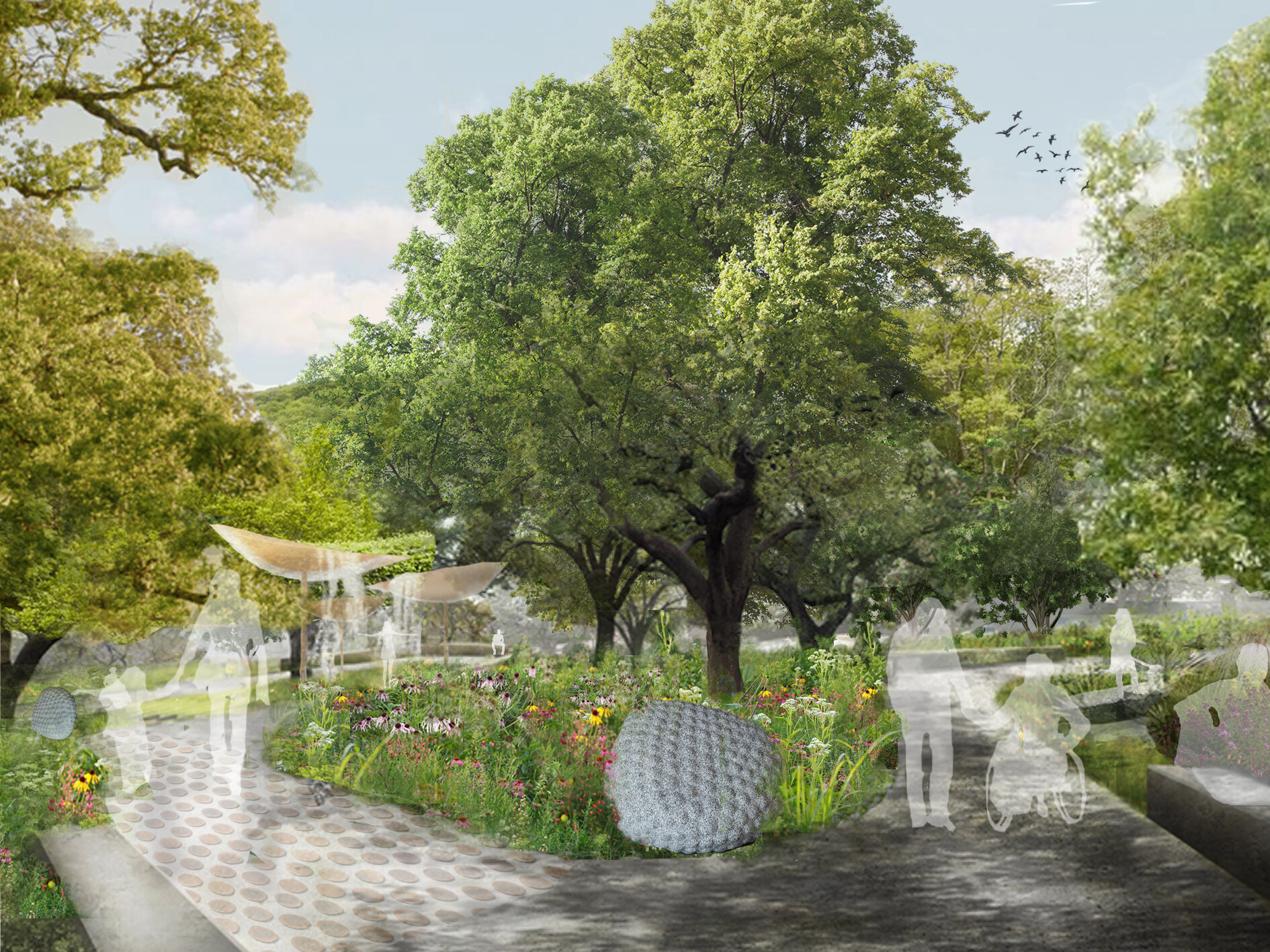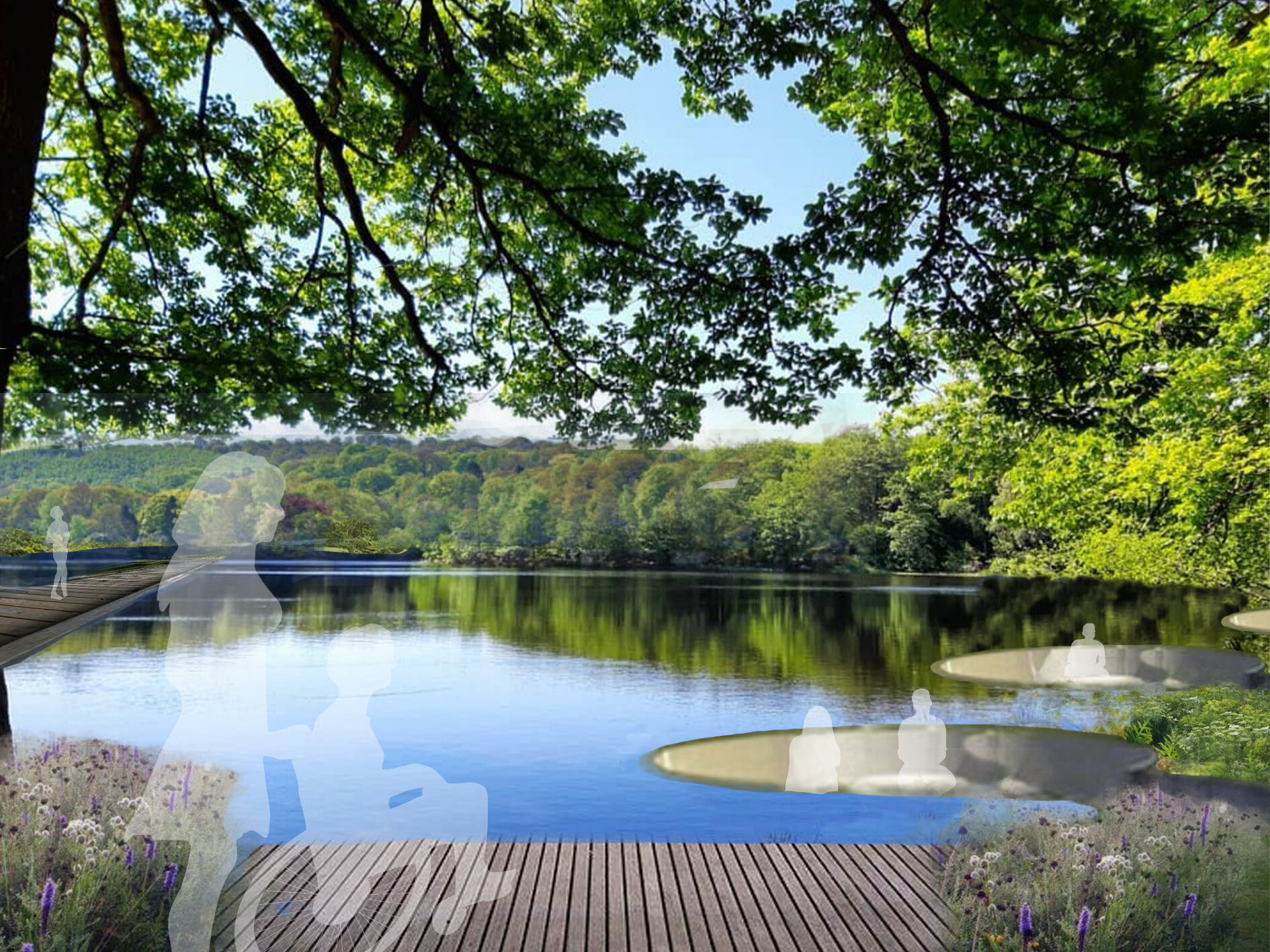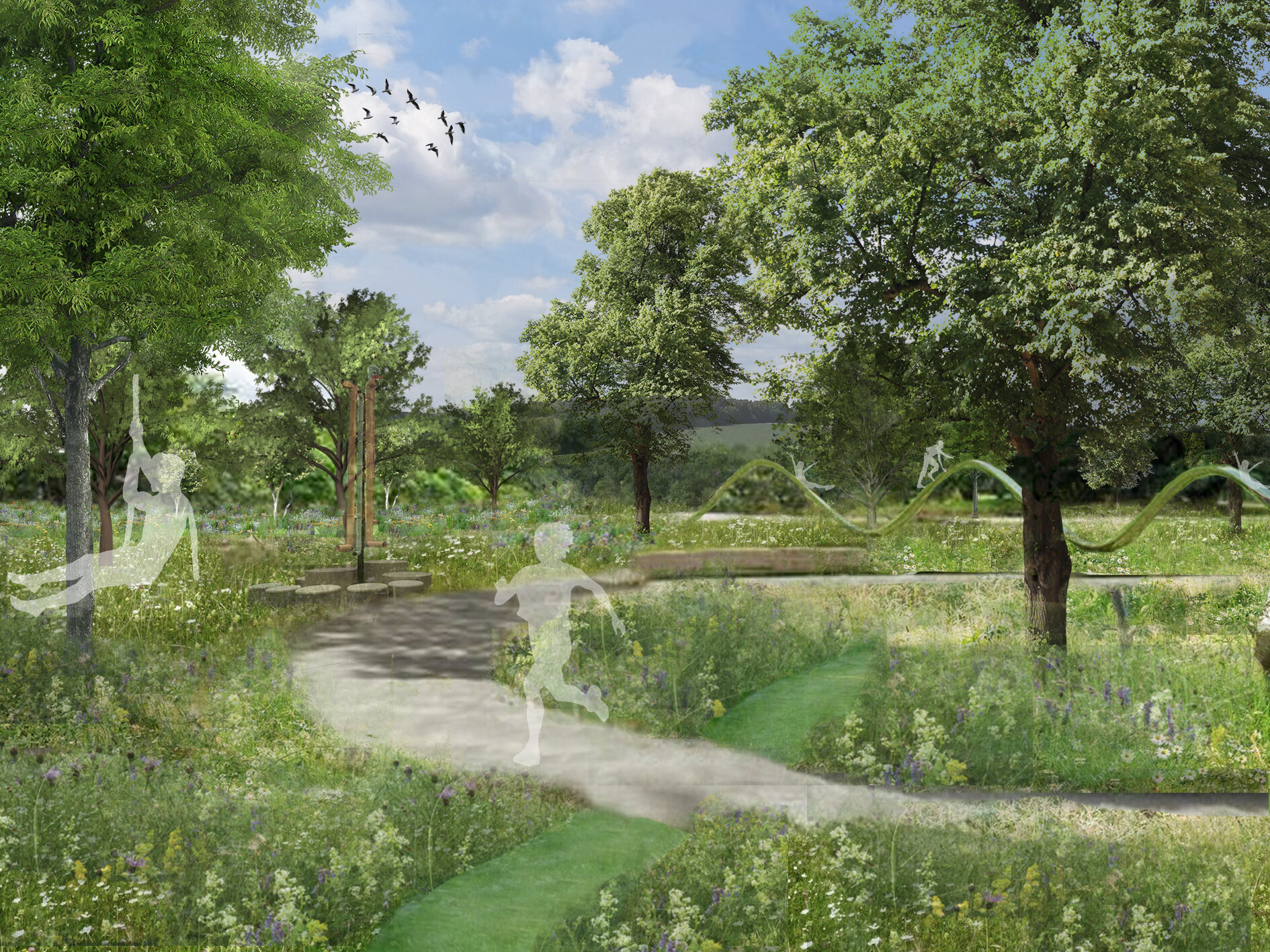Project - Aspens (Future Proposal)
The Brief - Connecting Nature with
Mental and Physical Wellbeing
A design that demonstrates the benefits of nature on mental health and well-being. Through the design I explored the biophilia hypothesis, the restorative effects of exercise and water and the physiological effect of the natural world on the human condition.
The Client - Aspens
Aspens provides services for people with high dependency needs, learning and physical disabilities and those within the autistic spectrum. The design brief was to connect mental health therapy to the natural environment. Aspens’ vision is for the space to be explored and engaging, have sensory areas, water, a productive area for residents to grow and a space to exercise.
The Design
The design is based on the biophilia hypothesis utilising my prior experience in psychology, reflecting the actual rather than assumed needs of the residents.
It includes sanctuary spaces for containment and therapy, a productive area to grow food for the café and residents, individualised sensory walks for residents with hypo-sensitivity and hyper-sensitivity (each with sensory-targeted planting) and a treetop walkway. Low-allergen planting has been used throughout and the entire site is wheelchair friendly.
The forest engages the senses, providing an opportunity for both residents and visitors to experience shinrin-yoku while the vineyard gives residents an opportunity to practice farming and connect with the landscape.
The circular lake pods provide cognitive and psychological therapy.







